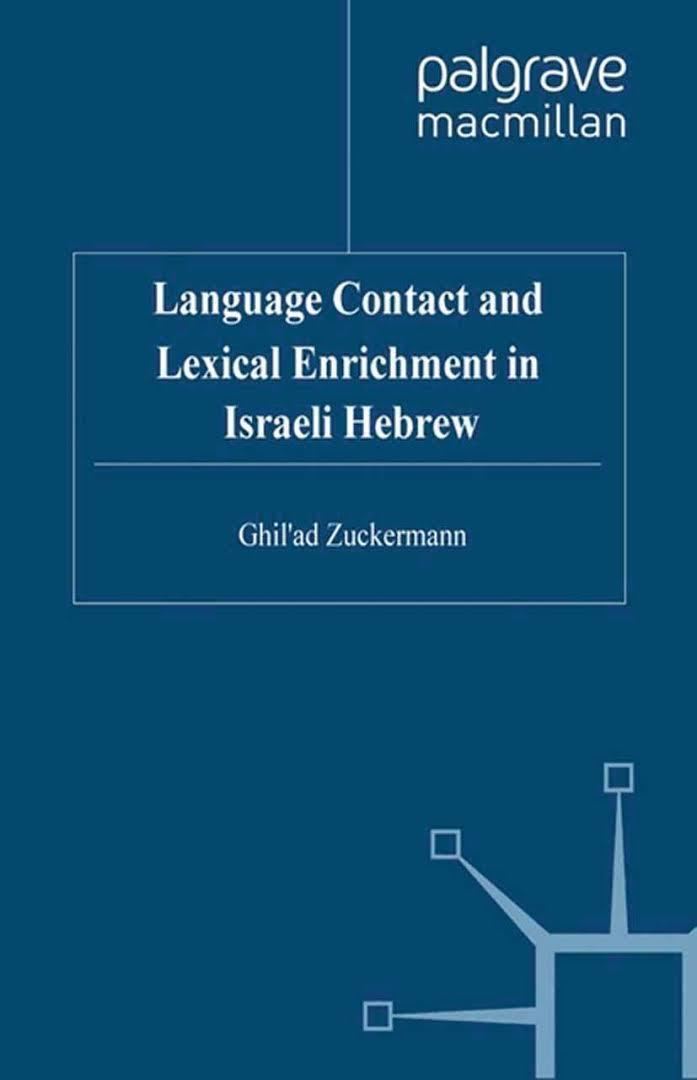Originally published 4 November 2003 | ||
 | ||
Similar Burning Issues in Afro‑Asiat, Globally Speaking: Motives f, Explorations in the Sociology | ||
Language Contact and Lexical Enrichment in Israeli Hebrew is a scholarly book written by linguist Ghil'ad Zuckermann, published in 2003 by Palgrave Macmillan. The book consists of 304 pages, including an index. It was the first monograph published within the series Palgrave Studies in Language History and Language Change. The book has two ISBNs: ISBN 978-1-4039-3869-5 and ISBN 1-4039-1723-X.
Contents
The cover of the book features three Israeli Hebrew words, all finally-stressed:
Overview
The book proposes a socio-philological framework for the analysis of "camouflaged borrowing" such as phono-semantic matching. It introduces for the first time a classification for "multisourced neologisms", new words that are based on two or more sources at the same time. The analysis presented in this book challenges Einar Haugen's classic typology of lexical borrowing. Whereas Haugen categorizes borrowing into either substitution or importation, this book explores cases of "simultaneous substitution and importation" in the form of camouflaged borrowing. Examples of such mechanisms are phonetic matching, semanticized phonetic matching, phono-semantic matching and calquing.
The book provides new perspectives on word formation, language change and contact linguistics. It establishes a principled classification of neologisms, their semantic fields, the roles of source languages, and the attitudes of purists and ordinary native speakers towards multi-factorial coinage. It analyses the tension between linguistic creativity and cultural flirting on the one hand, and the preservation of a distinct language identity on the other hand.
The book explores words and phrases in Israeli, Revolutionized Turkish, Mandarin Chinese, Japanese, Arabic, Yiddish, Estonian, Swahili, pidgins and creoles.
Reviews
The book was commended by Geoffrey Lewis (University of Oxford), James A. Matisoff (University of California, Berkeley), Jeffrey Heath (University of Michigan), and Shmuel Bolozky (University of Massachusetts).
According to Joseph T. Farquharson (Linguistlist):
The book is an outstanding piece of scholarship which undoubtedly represents a milestone in the field of lexicology. Zuckermann's attention to details has made the work a mini-encyclopaedia, much in the tradition of Jewish scholarship. Generally, his etymologies are well thought out and set a standard for current and future research [...] It would be foolhardy for any lexicographer, lexicologist, etymologist, language planner, morphologist not to have a copy of this book handy. The work is accessible to a general audience though. Zuckermann set himself an ambitious task which he has achieved with astounding brilliance.
